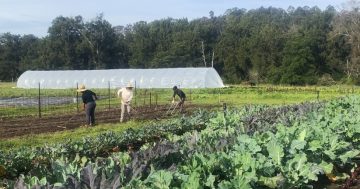
ABARES is forecasting a high value of production year for Australia’s agriculture sector. Photo: File.
Australia’s agriculture sector is on track for a high production value year even though drought is still making life tough for many farmers and pastoralists.
Despite setbacks and drier conditions across some parts of Australia, the agriculture sector is forecast to have its second-highest value of production on record in 2024–25.
The overall value of the agriculture, fisheries and forestry sectors is forecast to reach $94.3 billion this financial year, according to the latest predictions released by the Australian Bureau of Agricultural and Resource Economics and Sciences (ABARES) in its Agricultural Commodities and Australian Crop reports.
ABARES executive director Jared Greenville said the agriculture sector alone was set to be worth $88.4 billion, up $6 billion from last year.
“The chief driver of the increase is higher prices for livestock, which has in turn driven higher livestock production,” Dr Greenville said.
“The gross value of crop production is also forecast to rise by $2.2 billion as higher domestic production more than offsets lower prices on global markets.
“Winter crop production volumes have risen by 16 per cent to a total of 55.1 million tonnes thanks to favourable growing conditions across major parts of NSW, Queensland and Western Australia.”
But production volumes in South Australia and Victoria have suffered from poor conditions across the winter cropping season, leading to year-on-year declines in both states.
Agricultural export values are forecast to fall to $70.1 billion in 2024–25, on the back of exportable crops returning to more normal levels following three record production years between 2020–21 and 2022–23. It will still be the third highest on record, indicating the ongoing demand for Australian products regardless of global volatilities.
“There is also good news for Australian red meat exports, which rose significantly in 2023–24 and are expected to reach a new record in 2024–25, thanks to strong demand from key trading partners such as the US, China, Japan and the Middle East,” Dr Greenville said.
“Good production conditions in the last few years for livestock have meant continued availability of livestock for turnoff in Australia.
“In 2024–25, red meat export values should reach record levels for both beef and veal exports (worth $13.9 billion) and sheep meat exports ($5.3 billion).”
According to reports, global economic growth is expected to increase in 2025 as rising household disposable income in major economies supports consumption.
World Gross Domestic Product (GDP) growth is expected to be 3.2 per cent in 2024 and 3.3 per cent in 2025, relatively in line with expectations from the September 2024 Agricultural Commodities Report.
Inflation has decelerated substantially over 2024 in most major economies reflecting flow-through effects of restrictive monetary policy, reduced consumer spending on goods, and normalised energy supply chains.
“Easing inflation has led to increased real wages growth and rising average household disposable incomes in 2024 across many major economies,” the Agricultural Commodities Report states.
“However, declines in real wage growth from 2021 to 2023 continue to weigh on household consumption in many economies.
“In 2025, further growth in real wages is expected to support increased household consumption across many major economies.”
According to the report, interest rates across many major economies are expected to decline in 2025, supporting private investment by reducing finance costs for households and businesses.
“Major central banks such as the European Central Bank and US Federal Reserve have recently lowered interest rates following a period of significant monetary policy tightening from early-2022 to mid-2023,” it states.
“However, the cumulative impact of accommodative monetary policy is yet to fully flow through the financial system.”
The report notes financial markets and central banks expect further interest rate cuts over 2025, further improving debt serviceability, household consumption and business investment.
Risks to the global economic outlook for 2025 are relatively balanced.



















